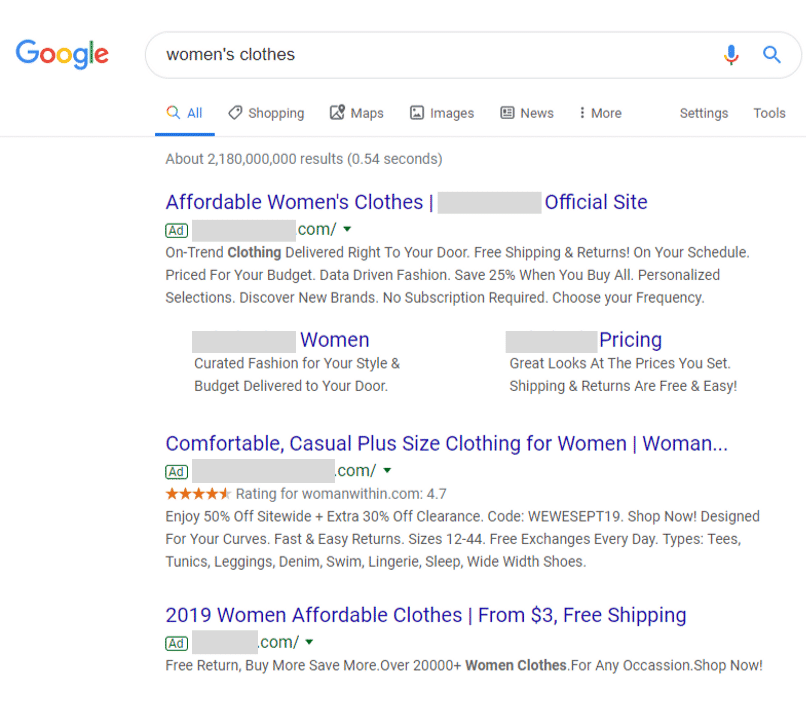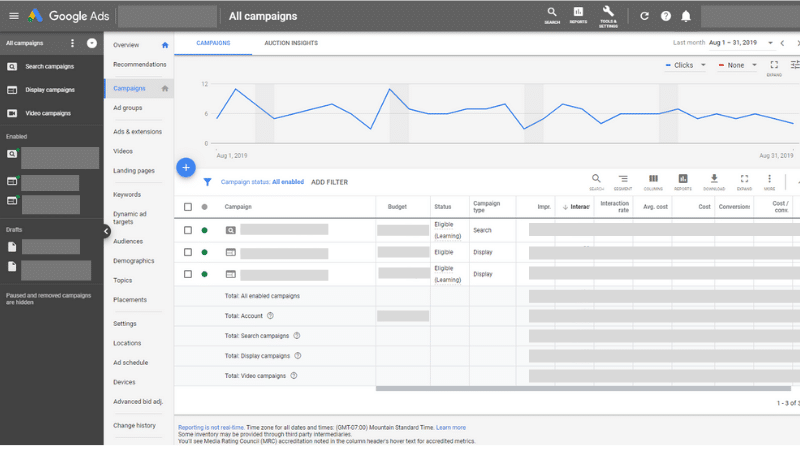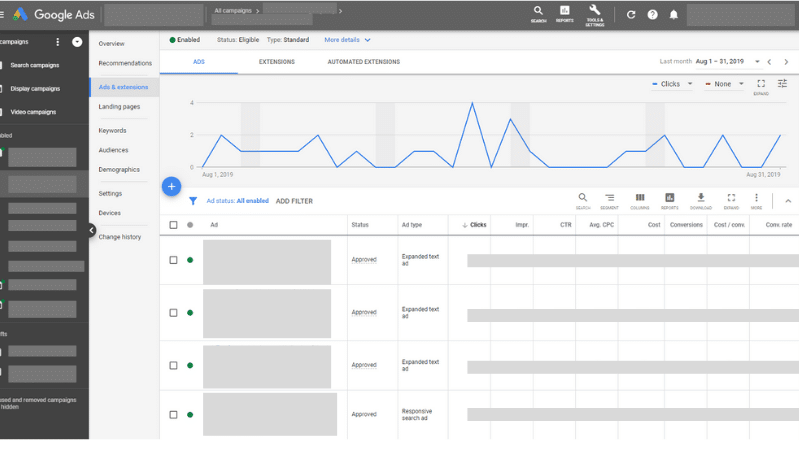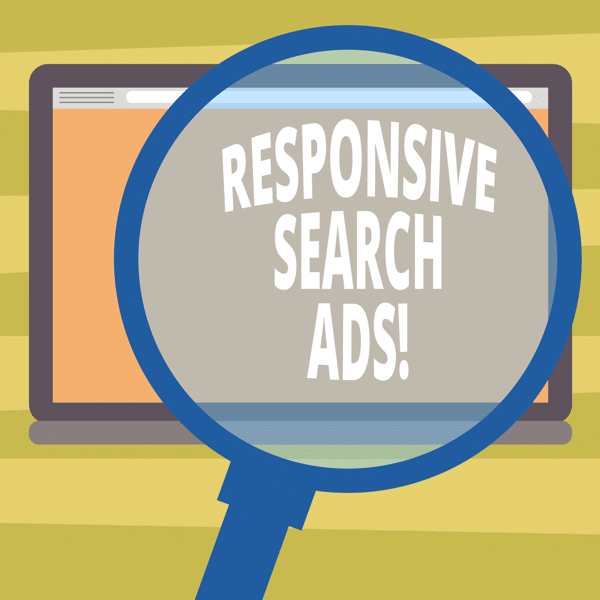When it comes to Google Ads, strategies come and go.
For a long time (and still today), many PPC advertisers utilized a strategy called single keyword ad groups — also called SKAGs, because we’re acronym addicts.
This campaign-building strategy supposedly ensured that the ads were super-duper relevant to a user, according to their search query.
But similar to keyword-stuffing in blogs and website content, Google saw a flaw in the way these particular ads were written.
See, by using SKAGs, advertisers were writing ad copy with keywords in mind — not the potential customer.
So Google introduced responsive ads, and we suggest you say goodbye to SKAGs as a result.
Wait…What Are SKAGs?

As we mentioned before, SKAGs are single keyword ad groups.
But, before we can clearly explain single keyword ad groups, we need to back up and explain ad groups and how they fit into the structure of an ad campaign.
It All Starts with an Ads Account
Let’s say you’re the proud owner of a women’s clothing boutique and you want to advertise with Google Ads.

First, you need to create an Ads account.
This is where you make payments, store your boutique’s information, and build your campaigns.

Now, once you have an Ads account set up, you can build your first Ads campaign.
Ads Campaign: A Group of Ads

In this example, let’s pretend you want to promote your store’s summer dresses, shoes, and handbags with paid search advertising.
That means you have three campaigns to build:
Campaign #1: Summer dresses
Campaign #2: Shoes
Campaign #3: Handbags
First, we’ll focus on Campaign #1: Summer dresses.
To build this campaign, we’ll need to create several ad groups. You can think of ad groups as subcategories within each campaign.
In this example, some ad groups could include:
- Casual summer dresses
- Trendy summer dresses
- Women’s summer dresses
And just like that, we have three ad groups!
Now, for each ad group, we’ll need to write multiple ad copies.
These ad copies are structured like this:
Headline | About Dresses/Your Brand | (Up to 30 characters)
Headline | About Dresses/Your Brand | (Up to 30 characters)
*Headline | #3 | (This one’s a coin toss — it may not show up when displayed)*
Description of your dresses/brand (up to 90 characters)
Description of your dresses/brand (up to 90 characters)
Single Keyword Ad Groups: How It Used to Work

So, every Google Ads campaign is made up of one or more ad groups (i.e. subcategories, like “summer dresses,” or “casual dresses”).
This is where SKAGs came into play.
See, the purpose of an ad group has most often been to organize your keywords.
(Remember: keywords are the words or phrases you use to trigger your ads in a search. So, if a user searches “casual dresses,” an ad from your “casual dresses” ad group may show up at the top of the results page).
That means most advertisers only use one keyword per ad group (hello, SKAGs).
So, using our boutique’s summer dress example: we have three keywords (casual summer dresses, trendy summer dresses, and women’s summer dresses), which means we will have three ad groups (one for each keyword), with multiple ads written for each group.
Why SKAGs *Used to Be* a Great Strategy
The concept is logical:
By organizing ad groups by keywords (i.e. search terms), you can rest assured that the keywords you bid on perfectly match your ads.
In other words, if you bid on the keyphrase “casual summer dresses,” you can be sure only the ads within that single keyword ad group are the ones put in front of the user.
That means your ads are always relevant.
Right?
When it Comes to Google, Intent > Exact Keywords

Google has become better (and better) at understanding what we’re really searching for.
Like an esteemed psychiatrist, Google listens to our queries but also considers our past behavior:
How we say things, when we search, and how long we spend searching — and uses this information to calculate what, exactly, we’re looking for.
So, Google has shifted away from keywords being the highest priority on a results page, and has leaned toward the user’s intention.
Enter: Responsive Ads

Responsive search ads are the newest (and most flexible) format for search ads; and as a result, have made SKAGs irrelevant.
Here’s how it works:
Instead of creating a series of static ad texts made up of headlines and descriptions (each revolving around one keyword), responsive ads allow you to to write up to fifteen headlines and four descriptions about your product or service.
Then, Google:
- Automatically creates different combinations of headlines and descriptions (avoiding repetitive copy)
- Tests those different ad copies
- Finds the most successful copy combinations (maximum of three headlines and two descriptions) for audience type
Over time, these responsive ads deliver the most relevant text to different users, depending on their unique intention.
Why Responsive Ads Are Revolutionary

Responsive ads are perhaps most impressive for their versatility when it comes to ad copy — but did we mention responsive ads can also adapt to show more text, depending on the user’s device?
Or that Google takes your ad copy, does the testing for you, determines which ad copy is most effective, and puts it in front of the right users — automatically?
Or that, according to Google, responsive ads have a 5-15% higher click through rate?
Look, we can get pretty nerdy over here about Google and the way they continually one-up themselves; but this is big.
While SKAGs were once considered the best way to build Google Ads campaigns, it is often time-consuming, messy, and isn’t the best way to manage your budget.
Create Your Own Responsive Ads
Whether you’re new to Google Ads or a seasoned expert, responsive ads are the future.
We’re willing to put money on it.
But if you’re not sure how to create your first responsive ads, don’t sweat it. This is still a new strategy (in fact, as of September 2019, responsive ads are still in beta), but you can learn the step-by-step directions here.
Or, you know, you can reach out to us at Solutions 8.
After all, Google Ads is all we do. Some might even say it’s our bread and butter; let us know if you want a seat at the table.
Author
Patience is the former director of marketing and communications for Solutions 8. A phenomenal content writer, copywriter, editor, and marketer, she has played a prominent role in helping Solutions 8 become an authority in the Google Ads space. Patience is also the co-author of The Ultimate Guide to Choosing the Best Google Ads Agency and You vs Google.
 Patience Hurlburt-Lawton
Patience Hurlburt-Lawton










